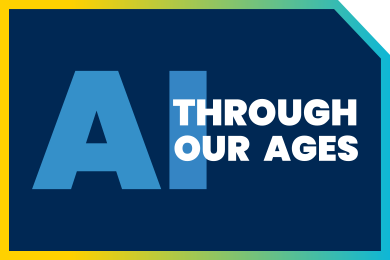October 10, 2024
In the late 1800s, Thomas Edison and Norvin Green of Western Union harnessed the power of electricity to spark a revolution that changed how we live and work. They were motivated to push new technological frontiers and were also savvy entrepreneurs and business leaders. Together, they helped found the American Institute of Electrical Engineers (AIEE), one of IEEE’s predecessor organizations. Alexander Graham Bell — himself an inventor and businessman — would later join AIEE.
Though IEEE’s roots lie in industry, many people now consider it an organization with an academic focus. We’re proud of our connections to academia, which bring considerable resources to IEEE. However, to remain a sustainable organization over the coming years, IEEE must reinvigorate our ties to industry.
We face two challenges on this front. One is retaining members as they move from university into the private sector. The second is tailoring our offerings to meet the needs of business.
Extending Lifelong Connections
Our student and graduate student membership levels remain strong. However, as an organization, IEEE needs to strengthen its connection with them as they enter the workforce. The vast majority of engineering and computer science students enter the private sector workforce after college. That holds true even for those with the highest credentials. Roughly 80% of newly-minted engineering PhDs go into the private sector, and more than 70% of computer science PhDs work in industry when they finish their degree, according to data from the National Science Foundation.
Significant changes have occurred in the engineering and technology professions and in the types of companies that employ engineering, computer science, and technology professionals. These professionals are more likely to hop from company to company every few years, while startups come and go. Today, technical jobs are rarely for life.
We need to nurture connections with IEEE members in companies, find champions within those companies, and give them the tools to show those they work with what IEEE is about and how it can provide value to their company. In particular, and especially in light of our need to attract and retain more younger members, we need to help them succeed in their ever evolving careers and be some of the best employees in their companies.
Nurturing Connections to Industry
The second challenge involves engaging the companies themselves.
Every company, even within the same sector, is different. We need to be able to tailor our offerings to meet each company’s needs. Over the past year, I’ve worked with companies all over the world to understand their needs and showcase the products and services IEEE offers. We need to follow up on these and other outreach to companies to create useful and meaningful partnerships.
If we can reinvigorate IEEE’s connections to global industry, I think we’ll reverse the aging of the IEEE population since many of our student members end up working in industry. Stronger industry connections will help us ensure that the IEEE is vital and valuable long into the future and that we are at the forefront of technological developments that benefit humanity.





 Meaningful Momentum or Running in Place?
Meaningful Momentum or Running in Place? AI Through Our Ages
AI Through Our Ages Liquid Infrastructure: Our Planet's Most Precious Resource
Liquid Infrastructure: Our Planet's Most Precious Resource The Impact of Technology in 2025
The Impact of Technology in 2025 Quantum and AI: Safeguards or Threats to Cybersecurity?
Quantum and AI: Safeguards or Threats to Cybersecurity? Why AI Can't Live Without Us
Why AI Can't Live Without Us Bits, Bytes, Buildings and Bridges: Digital-Driven Infrastructure
Bits, Bytes, Buildings and Bridges: Digital-Driven Infrastructure Impact of Technology in 2024
Impact of Technology in 2024 Emerging AI Cybersecurity Challenges and Solutions
Emerging AI Cybersecurity Challenges and Solutions The Skies are Unlimited
The Skies are Unlimited Smart Cities 2030: How Tech is Reshaping Urbanscapes
Smart Cities 2030: How Tech is Reshaping Urbanscapes Impact of Technology 2023
Impact of Technology 2023 Cybersecurity for Life-Changing Innovations
Cybersecurity for Life-Changing Innovations Smarter Wearables Healthier Life
Smarter Wearables Healthier Life Infrastructure In Motion
Infrastructure In Motion The Impact of Tech in 2022 and Beyond
The Impact of Tech in 2022 and Beyond Cybersecurity, Technology and Protecting Our World
Cybersecurity, Technology and Protecting Our World How Technology Helps us Understand Our Health and Wellness
How Technology Helps us Understand Our Health and Wellness The Resilience of Humanity
The Resilience of Humanity Harnessing and Sustaining our Natural Resources
Harnessing and Sustaining our Natural Resources Creating Healthy Spaces Through Technology
Creating Healthy Spaces Through Technology Exceptional Infrastructure Challenges, Technology and Humanity
Exceptional Infrastructure Challenges, Technology and Humanity The Global Impact of IEEE's 802 Standards
The Global Impact of IEEE's 802 Standards Scenes of our Cyber Lives: The Security Threats and Technology Solutions Protecting Us
Scenes of our Cyber Lives: The Security Threats and Technology Solutions Protecting Us How Millennial Parents are Embracing Health and Wellness Technologies for Their Generation Alpha Kids
How Millennial Parents are Embracing Health and Wellness Technologies for Their Generation Alpha Kids Space Exploration, Technology and Our Lives
Space Exploration, Technology and Our Lives Global Innovation and the Environment
Global Innovation and the Environment How Technology, Privacy and Security are Changing Each Other (And Us)
How Technology, Privacy and Security are Changing Each Other (And Us) Find us in booth 31506, LVCC South Hall 3 and experience the Technology Moon Walk
Find us in booth 31506, LVCC South Hall 3 and experience the Technology Moon Walk Virtual and Mixed Reality
Virtual and Mixed Reality How Robots are Improving our Health
How Robots are Improving our Health IEEE Experts and the Robots They are Teaching
IEEE Experts and the Robots They are Teaching See how millennial parents around the world see AI impacting the lives of their tech-infused offspring
See how millennial parents around the world see AI impacting the lives of their tech-infused offspring Take the journey from farm to table and learn how IoT will help us reach the rising demand for food production
Take the journey from farm to table and learn how IoT will help us reach the rising demand for food production Watch technical experts discuss the latest cyber threats
Watch technical experts discuss the latest cyber threats Explore how researchers, teachers, explorers, healthcare and medical professionals use immersive technologies
Explore how researchers, teachers, explorers, healthcare and medical professionals use immersive technologies Follow the timeline to see how Generation AI will be impacted by technology
Follow the timeline to see how Generation AI will be impacted by technology Learn how your IoT data can be used by experiencing a day in a connected life
Learn how your IoT data can be used by experiencing a day in a connected life Listen to technical experts discuss the biggest security threats today
Listen to technical experts discuss the biggest security threats today See how tech has influenced and evolved with the Games
See how tech has influenced and evolved with the Games Enter our virtual home to explore the IoT (Internet of Things) technologies
Enter our virtual home to explore the IoT (Internet of Things) technologies Explore an interactive map showcasing exciting innovations in robotics
Explore an interactive map showcasing exciting innovations in robotics Interactively explore A.I. in recent Hollywood movies
Interactively explore A.I. in recent Hollywood movies Get immersed in technologies that will improve patients' lives
Get immersed in technologies that will improve patients' lives